Thank you for supporting Nature Moments! We are making the world a better place, one nature connection at a time - be curious, be amazed, and then do it again! 💚
The parsley is just beginning to leaf out, frilly mounds of electric green mohawk-ing out of mulch and mud. They’re a bit comical at this stage, so many little punk rockers rebelling against the norms defined by the graceful arches of tender leaves that gently announce the arrival of most of their counterparts. I like plants that make statement entrances. The lupines have a similar flair, cosplaying as fully-formed tiny palm trees from their earliest moments even though we are way too far north for tropical impersonators.
Anyway, back to the parsley. And the Luna Moth. Have you ever met a Luna Moth? They have sort of an entire aura of mythology, don’t they, as though encountering one in person should shift a dimension or open a portal or perhaps unlock some latent ability for magical sight.
Why are they so improbably large? And luminous? Why the sweeping train of fairy princess ribbons twin-gracing that dramatic wingspan? And why, exactly, are they so fond of parsley?
I don’t actually think that they’re overly fond of parsley as a general rule, but I do have the two eternally linked in my memory because of one sunny, happy, early-June day when a Luna Moth chose our bed of parsley to launch its debut into the high season.
When a Luna Moth settles on your parsley, the rest of the world goes on pause. I sat, transfixed, as time unraveled somewhere beyond my notice, and just watched this winged magnificence be everything he was, like it was no big deal.
Like other silk moths, these guys only live for a high-speed week or two. They don’t even eat, actually. This adult stage is purely dedicated to finding mates and securing future generations. Intersecting that brief window every year is a gift and an honor.
This is a male Luna Moth. You can tell most easily by the antennae. His antennae are very broad, feathery and fanned out, ready to collect the faintest hint of pheromones to connect him with the ladies :) A female Luna Moth will also have long, golden antennae - but narrow.
One thing I’ve noticed about emerging moths is that they often like to find a nearby flexible stem, and climb up just until it gently arcs beneath their weight. I’ve watched moths test stem after stem until they find the one that is just right, and then settle into perfect stillness and contentment.
Isn’t that fascinating? Maybe you enjoy a weighted blanket. I have a Rumpl sherpa blanket that is my perfect emotional-support-level of soft weight. For this moth, emotional support is a gently curving stem.
Luna Moths are very furry, with such cute little eyes, faces framed with the softest pink legs.
They are, of course, absolutely the best at hide and seek. Can. Not. See. Him. At all. 😒
The chances of spotting a Luna Moth in my life have been entirely serendipitous. We don’t see them every season, though we know they’re always around somewhere. The thing is, they are forest-y moths, and they are nighttime flyers, so they could easily live out their entire quick lives, emerging from leaf litter, fluttering about in the dark, and you might never even see them!
Or, you might stumble upon one walking across the forest floor. Or resting on the side of a brick building in historic small-town Maine. Or trying to find its way out of the women’s bathroom at Acadia National Park. Or snoozing in your bed of parsley! That’s the thing about Luna Moths, you really just never know.
So when that moment comes, and all of life aligns, and your path crosses with a Luna Moth, be sure you take a moment to drink it all in!





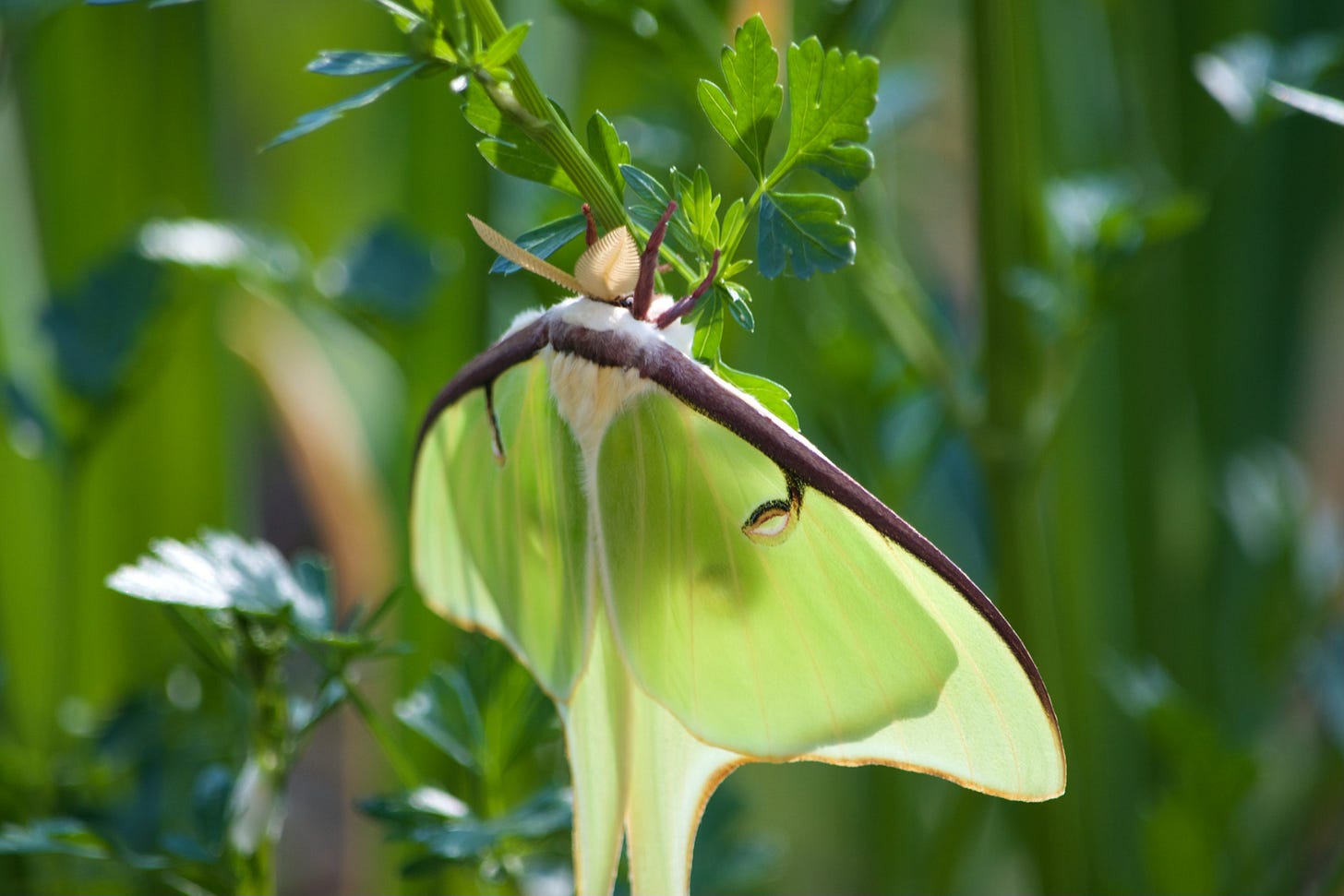

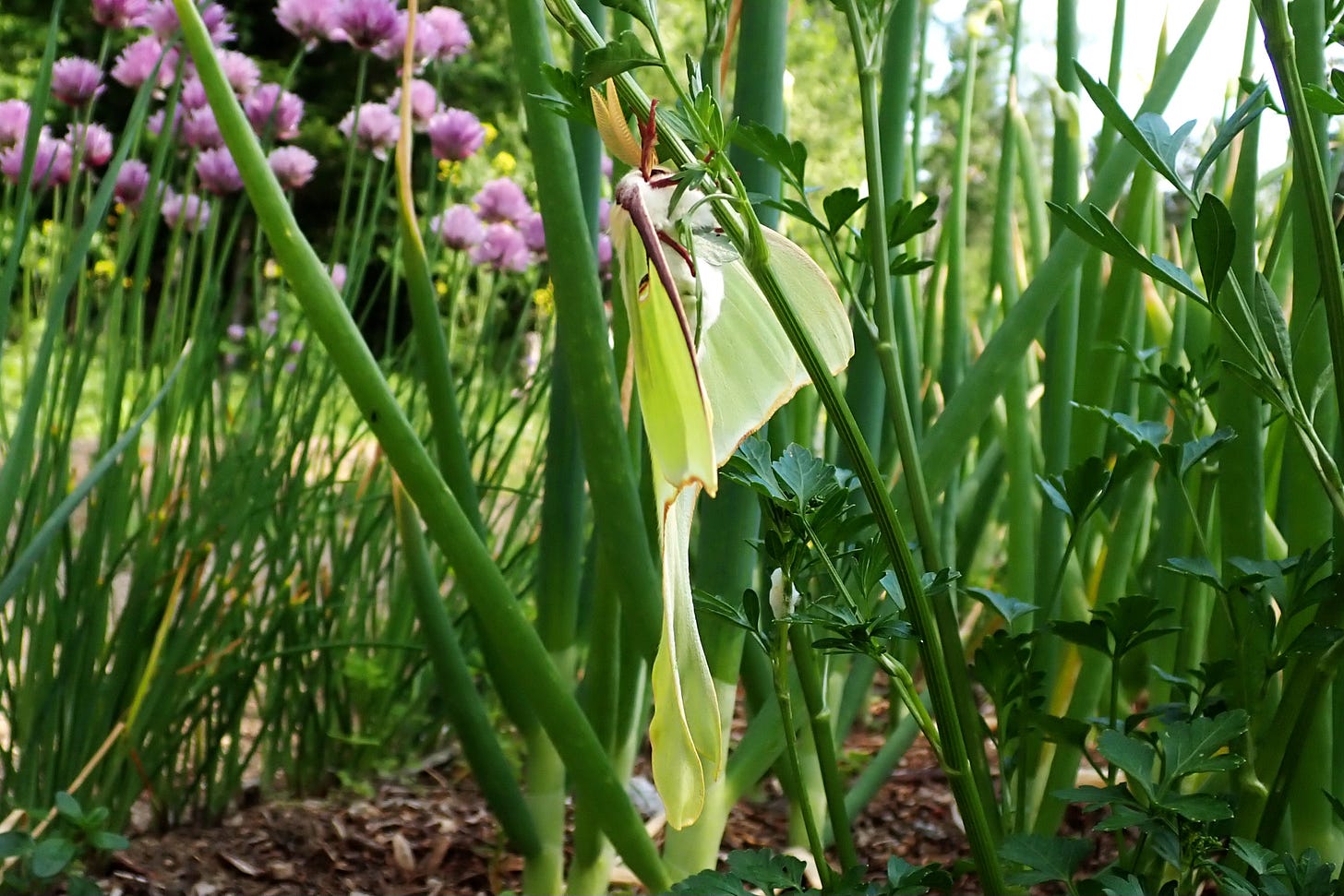
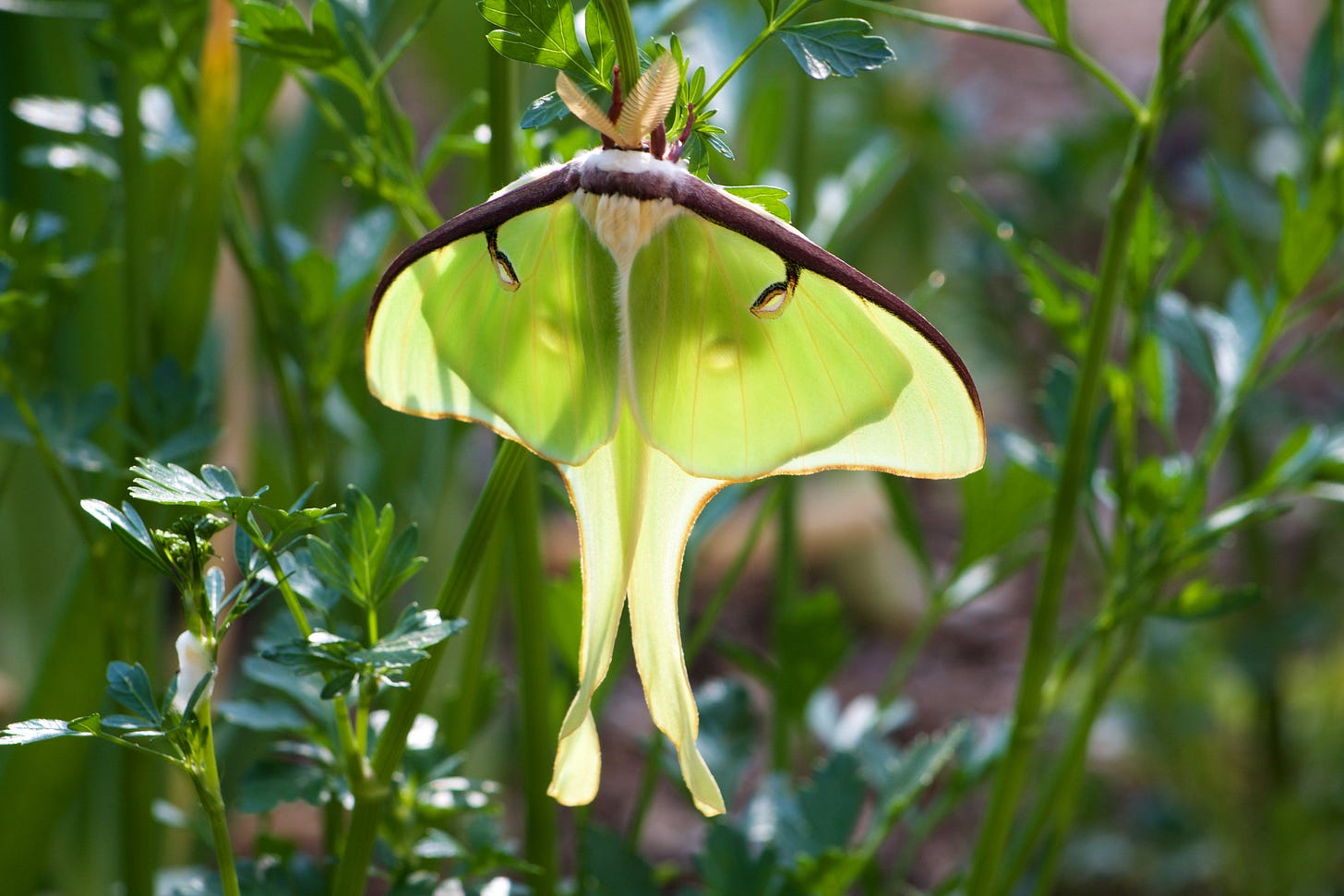


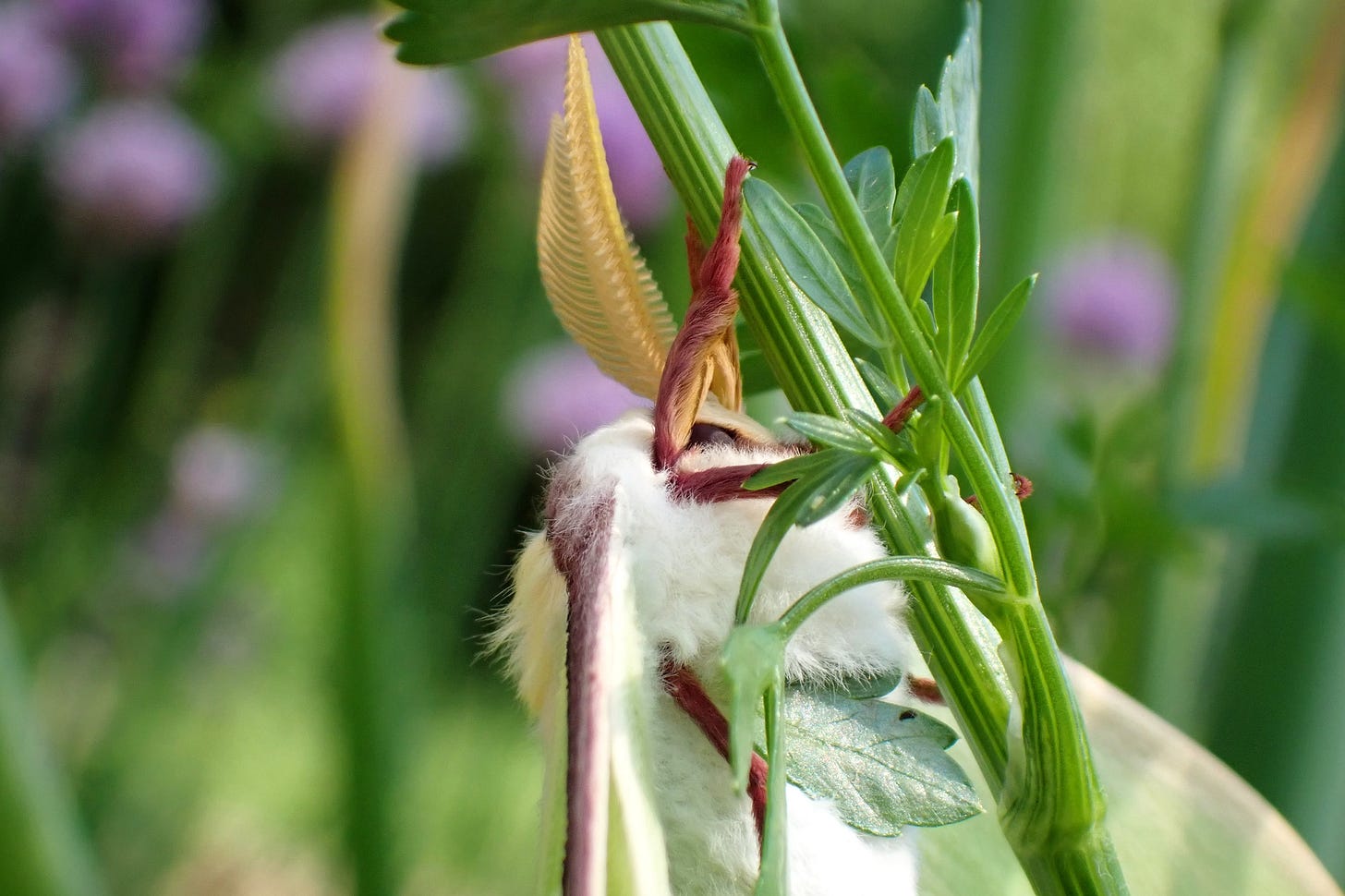
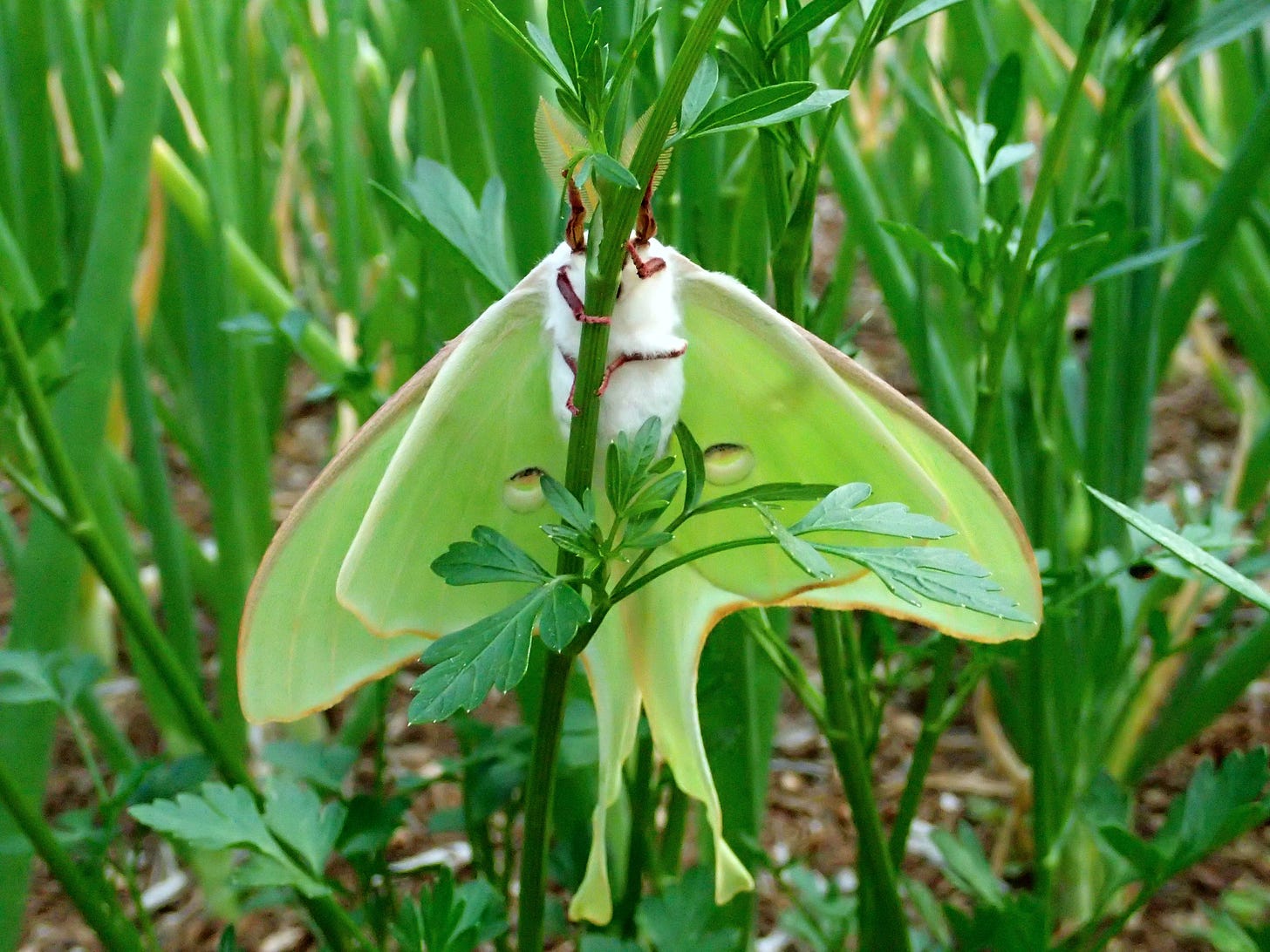
Sydney, your words and images, along with the video, trolled “diaphanous” out of my skull! Thanks ever so much!
Sydney, I love this memory of the Luna Moth on your parsley. And your photos are just fabulous. Thank you so much for taking us back into your memories for this beautiful post.